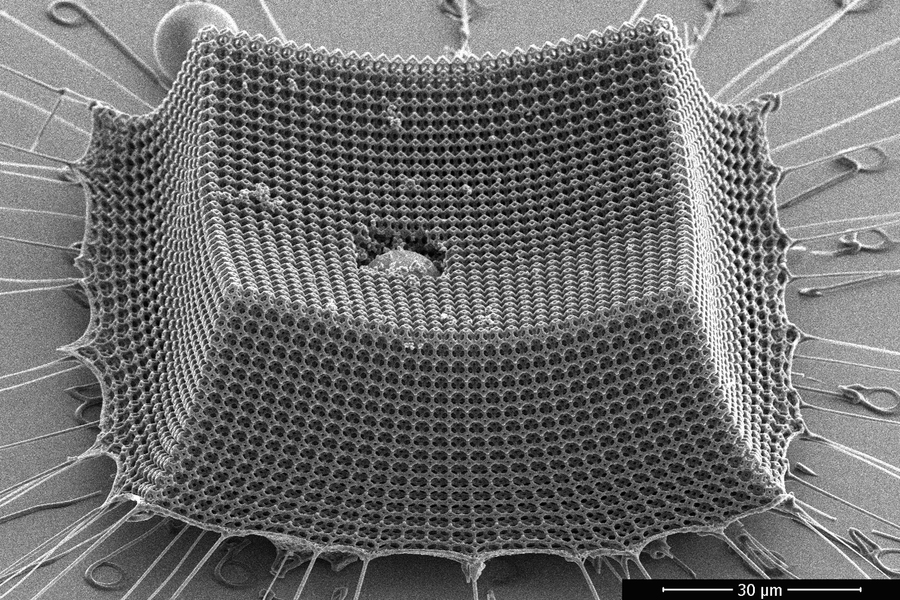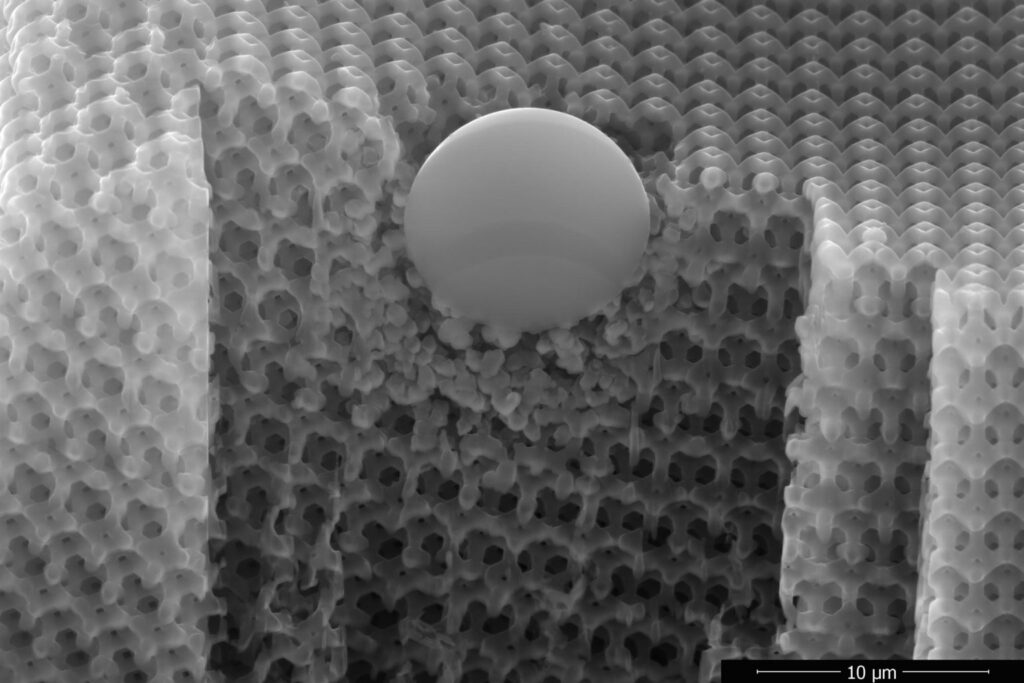New Ultralight Material That Is Tougher Than Steel and Kevlar from MIT

A team of researchers from MIT, ETH Zürich, and Caltech developed a revolutionary ultralight material. The material is designed using a precisely patterned nanoscale structure. The new material has many impact-resistant applications, such as blast shields, protective coatings, or lightweight armor. It is stronger than Kevlar because it is made from nanometer-scale carbon struts, which render the material more mechanical robustness and material toughness.
More efficient impact resistance
For a long time, Kevlar is the strongest material for impact protection. In 2019, there was noise regarding graphene, which is 200 times stronger than steel. As thin as human hair, the material was still under research because it was difficult to mass-produce. The researchers are experimenting with integrating graphene with silk. However, the material has some problems, one of which is that it becomes weaker when adding multiple layers.
The properties of graphene are different from the new materials that the researchers from MIT developed. The ultralight material is thinner than the width of human hair. But it is very strong. The team tested its resilience by shooting the material with microparticles at supersonic speeds. The material prevents the tiny projectiles from penetrating it.
According to the researchers, their material is more efficient at absorbing impacts than Kevlar, steel, aluminum, and others of almost the same weight. The lead author of the study and an assistant professor of mechanical engineering at MIT, Carlos Portela, further explained that the same amount of mass of the material they created is more efficient than the same amount of Kevlar at stopping a projectile. He added that if the material and other materials that are nanoarchitected can be mass-produced, they can design tougher yet lighter alternatives to steel and Kevlar. The knowledge they gain from their work can give them other design principles for more ultra-weight, impact-resistant materials. They can use the material to produce blast-resistant shields, protective coatings, and armor materials for space and defense applications, according to Julia R. Greer, the co-author of the research. She is a materials science, mechanics, and medical engineering professor at Caltech. They produced the material at her Caltech lab.
Different architecture
The material developed by the researchers was nanoarchitected. A material that is nanoarchitected comprises patterned nanometer-scale structures. Their unique properties depend on the arrangement of the patterns. But the researchers said that the potentials of these materials are still not thoroughly tested.
Professor Portela said they only knew of the material’s response in a slow-deformation program; thus, they focused on fast deformation, like on high-velocity impacts. The researchers first developed a nanoarchitected material employing two-photon lithography that uses a fast, high-powered laser. The laser quickly solidifies the microscopic structures using a photosensitive resin. The research team used the repeating pattern called a lattice structure comprising tiny struts called tetrakaidecahedron.
The professor says they chose that particular pattern in a carbon material to give it a flexible, impact-absorbing property. Typically, the carbon material is stiff and brittle. The foam-like architecture gives the carbon material a rubbery and easy-to-bend property.

Series of tests
The team subjected the carbon materials to various tests. Using laser power, they fired microparticle projectiles at different speeds, ranging from 40 to 1,100 meters per second, near the supersonic range. They filmed the experiments using a high-speed camera, and they were able to capture the impact created by the microparticles on the material. For the experiment, they produced two materials of different densities, with the less dense material having thinner struts. After the tests, they found that the denser material was more resilient and the microparticles become embedded in it instead of tearing through the material. From their analysis, they discovered that beneath the embedded particles, the microscopic struts crumpled and compacted due to the impact, but the surrounding area was not affected.
Future research
Prof. Portela said that they would continue to pursue the subject. They will explore other nanostructured configurations and other materials aside from carbon and find ways to speed up their production. They want to continue designing protective materials that are lighter and tougher, as they can benefit many applications and industries.